
Great Indian Emperors: Conquests, Governance, and Legacy
Discover the greatest kings of India who shaped history through their conquests, governance, and cultural contributions. From Chandragupta Maurya to Maharaja Ranjit Singh, explore their legacies and impact on India's civilization.
HISTORYINDIAN HISTORYEMPIRES/HISTORYEDUCATION/KNOWLEDGE
Sachin K Chaurasiya
2/19/20256 min read


India's rich history is adorned with the reigns of powerful and visionary kings who shaped the subcontinent through their conquests, governance, and cultural contributions. From the Mauryan Empire to the Maratha Confederacy, these rulers not only expanded territories but also fostered economic prosperity, religious tolerance, and architectural marvels. Let's explore the greatest kings of India, their achievements, and their enduring legacies.
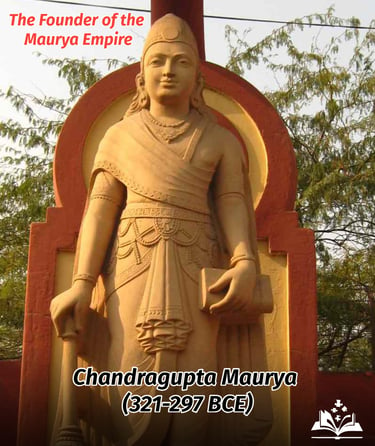

Chandragupta Maurya (321–297 BCE)
Founder of the Maurya Empire
Chandragupta Maurya/चन्द्रगुप्त मौर्य was the architect of the first great empire in Indian history—the Maurya Empire. With the guidance of his mentor and strategist, Chanakya/चाणक्य, he overthrew the Nanda dynasty and laid the foundation for a centralized administration. His reign saw extensive military conquests, including the defeat of the Seleucid Empire's forces under Seleucus I Nicator. Chandragupta's governance model, as detailed in Chanakya's Arthashastra/चाणक्य का अर्थशास्त्र, established economic policies, taxation, and law enforcement mechanisms that influenced future Indian rulers. He later embraced Jainism and abdicated the throne in favor of his son, Bindusara.
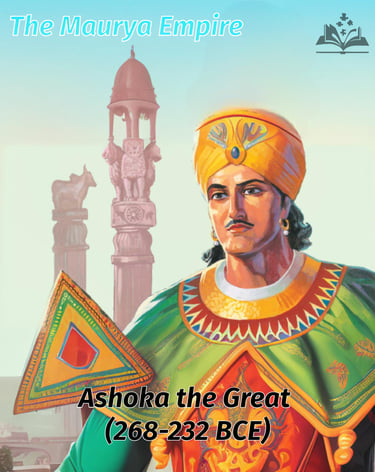

Ashoka the Great (268–232 BCE)
The Emperor Who Embraced Buddhism
One of the most renowned rulers of ancient India, Ashoka/अशोक expanded the Maurya Empire/मौर्य साम्राज्य to its greatest extent, covering most of the Indian subcontinent. However, after witnessing the horrors of the Kalinga War, he renounced violence and adopted Buddhism, spreading its teachings across Asia. Ashoka's edicts, inscribed on pillars and rocks, emphasized dharma (moral law), religious tolerance, and welfare measures such as hospitals and roads. His efforts led to the spread of Buddhism to Sri Lanka, China, and beyond, making him a pivotal figure in world history.
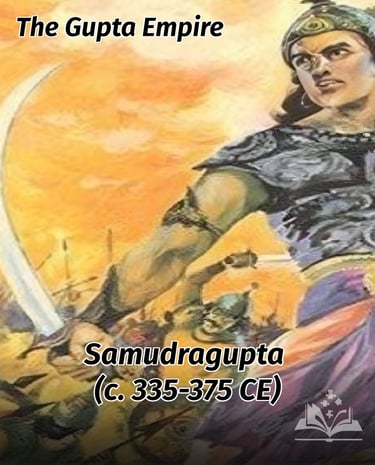

Samudragupta (c. 335–375 CE)
The Warrior King of the Gupta Empire
Samudragupta/समुद्रगुप्त, known as the 'Napoleon of India,' was a brilliant military strategist who expanded the Gupta Empire/गुप्त साम्राज्य through numerous conquests. His famous Allahabad Pillar Inscription records his victories over various northern and southern kingdoms. He was not only a warrior but also a patron of art, literature, and music, fostering a golden age of Indian culture and intellectual achievements. His rule marked the beginning of a period of unprecedented prosperity in India.
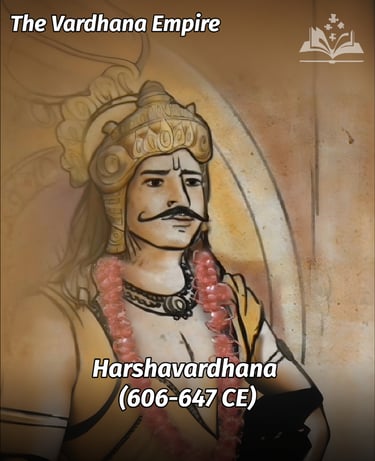

Harsha (606–647 CE)
A Benevolent and Learned King
King Harsha/राजा हर्ष of the Vardhana dynasty/वर्धन राजवंश was a scholar-ruler who maintained political stability in northern India. His administration emphasized justice, education, and welfare programs. Harsha was a great patron of Buddhism and Hinduism, organizing grand assemblies for religious discussions. His court was graced by scholars like Banabhatta, who documented his rule in Harshacharita/हर्षचरित. He was known for his diplomatic relations with China, sending emissaries to the Tang Dynasty.
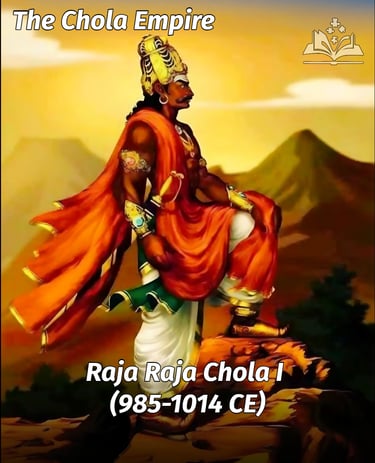

Rajaraja Chola I (985–1014 CE)
The Great Chola Emperor
Rajaraja Chola I/राजराजा चोल प्रथम transformed the Chola dynasty/चोल वंश into a dominant maritime and military power. He expanded his kingdom across South India, Sri Lanka, and parts of Southeast Asia. His administrative reforms, including an efficient revenue system and temple management policies, set benchmarks in governance. The grand Brihadeeswarar Temple in Thanjavur, a UNESCO World Heritage Site, remains a testament to his architectural patronage. His naval expeditions enhanced trade and cultural exchanges with Southeast Asian countries.

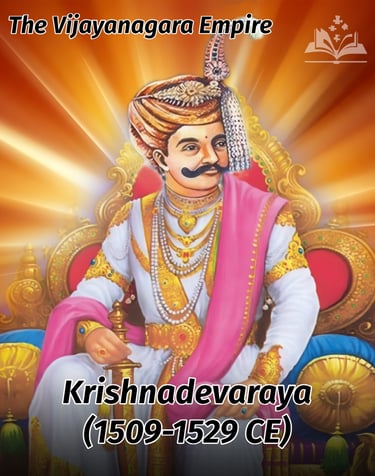
Krishnadevaraya (1509–1529 CE)
The Jewel of the Vijayanagara Empire
Krishnadevaraya/कृष्णदेवराय was the most celebrated ruler of the Vijayanagara Empire/विजयनगर साम्राज्य. His reign witnessed military victories against the Deccan Sultanates and the expansion of the empire. He was a patron of literature, art, and architecture, commissioning temples like the famous Vittala Temple in Hampi. His book Amuktamalyada/अमुक्तमाल्यदा in Telugu reflects his deep understanding of statecraft and governance. His reign also saw advancements in irrigation and agriculture, ensuring food security for his people.
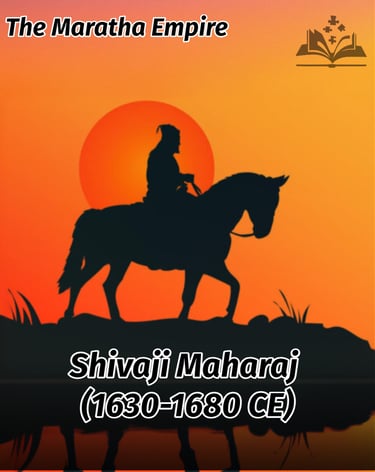

Shivaji Maharaj (1630–1680 CE)
The Founder of the Maratha Empire
Shivaji Maharaj/शिवाजी महाराज was a fearless warrior and a master of guerrilla warfare. He challenged the mighty Mughal Empire and established the Maratha Confederacy/मराठा संघ, emphasizing self-rule and efficient governance. His navy strengthened coastal defenses, and his forts remain symbols of resilience. His administration, based on justice and welfare, made him a beloved ruler among his people. His coronation in 1674 marked the revival of Hindu sovereignty in India after centuries of foreign domination.
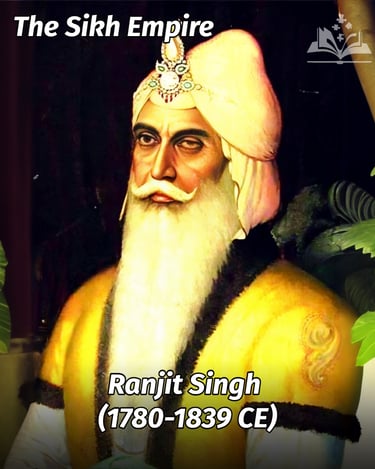

Maharaja Ranjit Singh (1780–1839 CE)
The Lion of Punjab
Maharaja Ranjit Singh/महाराजा रणजीत सिंह united the Sikh factions to form the powerful Sikh Empire. His military reforms modernized the army with European assistance, and he maintained a secular administration that included Hindus and Muslims. The Golden Temple in Amritsar flourished under his patronage, and his rule is remembered for peace, prosperity, and strong defense against foreign invasions. His leadership ensured that Punjab remained the last independent Indian kingdom before British colonization.
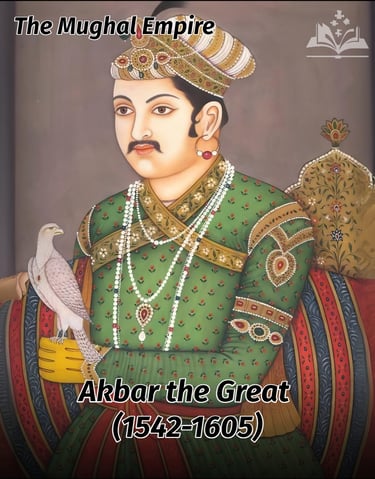

Akbar the Great (1556–1605 CE)
A Visionary and Inclusive Ruler
Akbar, the third Mughal emperor, is regarded as one of India's greatest rulers for his military conquests and administrative reforms. He established a centralized government, promoted religious tolerance through the Din-i-Ilahi, and fostered cultural exchanges. The architectural marvels of Fatehpur Sikri and the integration of Persian and Indian styles in Mughal art flourished under his reign. Akbar's land revenue system, the Zabt system, improved agricultural taxation and governance.
The kings of India were not just warriors but also visionaries who contributed to governance, economy, culture, and architecture. Their legacies continue to inspire modern India, reflecting the nation’s resilience and diversity. From the Mauryan and Gupta empires to the Cholas, Mughals, and Marathas, these rulers shaped the course of history, leaving an indelible mark on the subcontinent.
FAQs
Q: Who was the greatest king in Indian history?
It depends on the criteria—military conquests (Samudragupta, Shivaji), administration (Chandragupta Maurya, Akbar), or cultural patronage (Rajaraja Chola, Krishnadevaraya). Ashoka is widely regarded as the greatest for his impact on governance and Buddhism.
Q: Which Indian king had the largest empire?
The Maurya Empire under Ashoka covered most of the Indian subcontinent, making it the largest empire in ancient Indian history.
Q: Who was India's last great king?
Maharaja Ranjit Singh, who ruled the Sikh Empire, is considered the last great native ruler before British colonization.
Q: Which Indian king had the largest empire?
The Maurya Empire under Ashoka covered most of the Indian subcontinent, making it the largest empire in ancient Indian history. His dominion stretched from present-day Afghanistan and Pakistan to Bengal and down to the Deccan Plateau.
Q: Who was India's last great king before British rule?
Maharaja Ranjit Singh, the ruler of the Sikh Empire, is considered the last great native ruler before British colonization. He unified Punjab, modernized the army, and maintained religious harmony in his administration.
Q: Which Indian king was known as the ‘Napoleon of India’?
Samudragupta of the Gupta Empire earned the title ‘Napoleon of India’ due to his extensive military campaigns and strategic conquests that expanded his empire across northern and central India.
Q: Which king of India was famous for his naval power?
Rajaraja Chola I of the Chola dynasty built a formidable navy, which helped expand his empire to Sri Lanka, the Maldives, and Southeast Asia. His naval dominance made the Cholas a significant power in the Indian Ocean.
Q: Who was the most religiously tolerant ruler in Indian history?
Akbar the Great is widely recognized for his policy of religious tolerance. He abolished the jizya tax on non-Muslims, engaged in interfaith dialogues, and introduced the syncretic Din-i-Ilahi philosophy, which promoted harmony among different religions.
Q: Which Indian king promoted literature and arts the most?
Krishnadevaraya of the Vijayanagara Empire was a great patron of literature, arts, and architecture. His court was adorned with renowned poets like Allasani Peddana, and he himself authored the famous Telugu literary work Amuktamalyada.
Q: Who was the first Indian king to establish a structured administration?
Chandragupta Maurya, guided by his advisor Chanakya, established a well-organized administrative system with a central government, efficient taxation policies, and a strong military, laying the foundation for future Indian governance models.
Q: Which Indian king renounced war and turned to Buddhism?
Ashoka the Great, after witnessing the destruction caused by the Kalinga War, renounced violence and embraced Buddhism. He focused on spreading peace, social welfare, and Buddhist teachings across Asia.
Subscribe To Our Newsletter
All © Copyright reserved by Accessible-Learning Hub
| Terms & Conditions
Knowledge is power. Learn with Us. 📚


